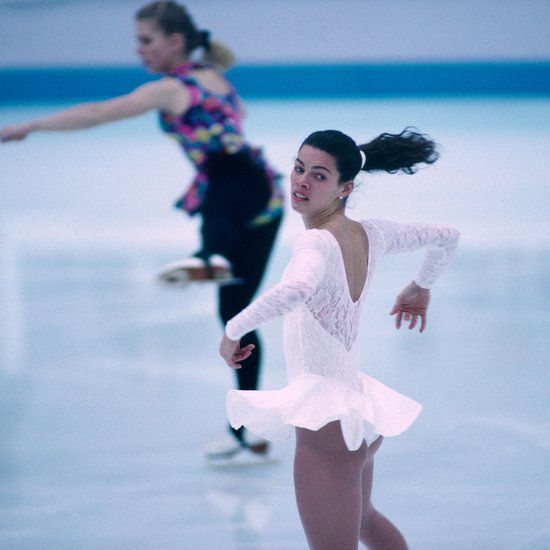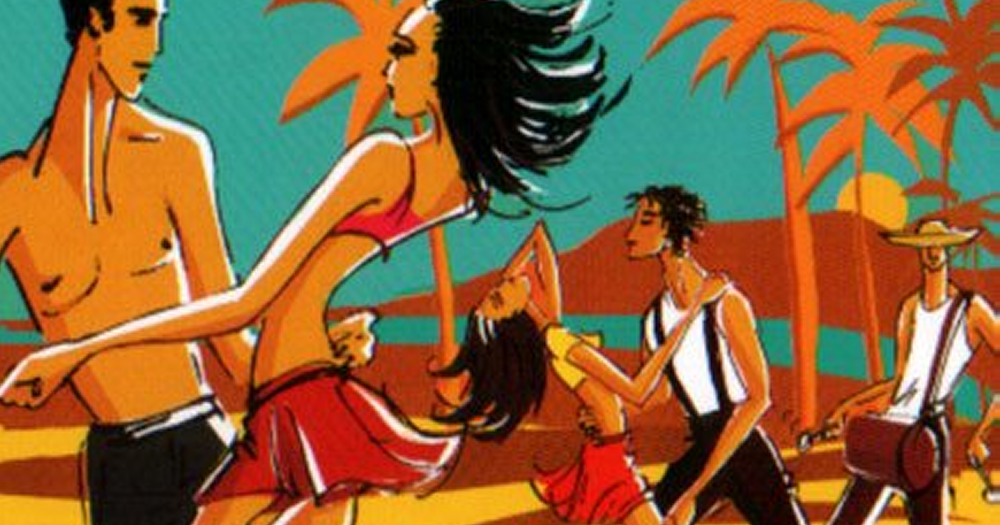How is the berezka dance done
Solving the Beriozka mystery. By Frederic Friedel | by The Friedel Chronicles
In the 1980s I paid Moscow a couple of visits. It was still part of the Soviet Union — communist to the core and sometimes quite scary. Here’s one example of what things were like at the time. There were few things to buy, and malls — well, the one mall, called GUM — were fairly empty of actual products. But there was culture everywhere, and visiting the Bolshoi or other theatres was quite inexpensive. And you got world class performances. So I went there a lot, caught ballet, opera and the rousing Don Cossacks.
The Red Square mall GUM in the 1980s — lots of shoppers, hardly anything to buy.One evening my host took me to see the Beriozka dance group. The what? Beriozka (or Beryozka) was a familiar name I knew — Soviet duty-free shops where foreigners and rich Russians could buy Western goods for Western currency. But a dance group? Some kind of ballet? I was definitely interested.
So off we went to the Moscow opera and ballet theatre. The evening started with a few high-kicking routines like this one (the picture is from the official Opera and Ballet site), all very nice, very impressive. But they were merely pre-shows for what was coming. And that was a performance that stuck in my mind for years.
It was delivered by the academic choreographic ensemble “Beriozka” (the name translates to “the little birch tree”), founded in 1948 by one of the most famous choreographers of the 20th century. The above site has a biography: “Nadezhda Sergeyevna imparted poetry of an ancient round dance to the classical dance, connecting the past to the present. The maiden round dance, composed by her to the sound of the Russian national song «Vo pole beryozka stoyala» («In the field the Birch stood») has been bewitching the audience by the exotic, «floating» step…”
When the Beriozka dancers appeared I was stunned. Take a deep breath and start the following video, recorded during a modern-day performance:
If this video gets taken down, simply search YouTube for “Beriozka” — there is plenty of material there.
In the Moscow theatre I had a place in the front row — having offered to take the cost, around $10, for it myself. At the start of the above video you can see what I mean by “front row” — I could lean forward and touch the stage. Which I did, because the impossible physics of what these ladies are doing — nobody can glide around like that — immediately suggests a trick. A fake floor or something. But that was clearly not the case. Were they on roller skates? Maybe with one foot on on a small skateboard, I speculated, while the other was used to push them forward. But the longer I looked the more implausible it became. Check the video yourself, in full screen, watch the faces and the upper torsos, and tell me if there is a better explanation.
I didn’t sleep well that night, the mystery was too puzzling. One theory I came up with, years later, was that they were using hoverboards. The only problem was that hoverboards would only be invented decades after the performance I had witnessed.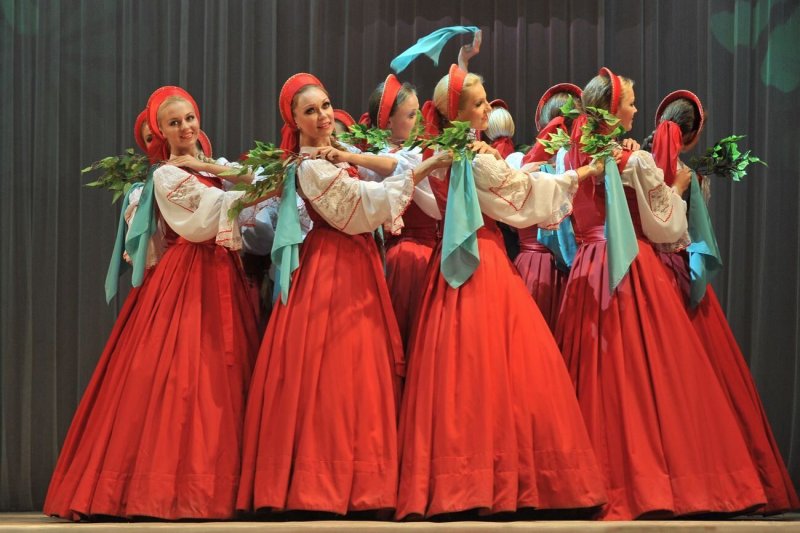 Today we could do a wonderful fake performance of Beriozka with self balancing unicycles. Memo to self: find a way of organizing such a performance!
Today we could do a wonderful fake performance of Beriozka with self balancing unicycles. Memo to self: find a way of organizing such a performance!
I have spent a lot of time trying to figure out Beriozka, even discussed it in forums — some of the theories others came up with, like “Iron-soled shoes coated with Teflon, with moving magnets under the stage,” were outlandish and unconvincing. I studied a number of videos, of less virtuoso performers, and gained an inkling of how it is done. In this video (at around 15 seconds and later) you can clearly see the footwork, since the dancers are wearing lights under their dresses, or here, starting at around 30 seconds. But compare them to the original Beriozkas in the second half of the second video — they are definitely not as good. Here’s a full explanation of the technique, given by a professional teacher — brush up your Russian to follow it. Unfortunately most of what you hear from the original Beriozka group is that it all comes out of the heart, or the soul, or some other I’m-not-telling-you place.
My conclusion: it is actually done with normal steps, little ones, and rigorous, almost super-human control of the upper body while taking them. Years of practice and discipline lead to the perfection I witnessed. So hats off to these remarkable ladies!
Addendum: maybe Beriozkais is just moonwalking?!
Meet Russia's Gravity-Defying Answer to the Rockettes
Manuel Palomino Arjona via FlickrOn a dimly lit stage, dozens of cloaked figures rise in unison under a somber, blue glow. As the spotlight grows brighter, the dancers are revealed; all unshakeable smiles and sparkles in their conical gowns that seemingly glide – no, float – across the stage like a life-sized music box. It’s enchanting, it’s eerie, and it’s kind of Russia’s answer to the Rockettes: the Berezka Dance Ensemble. Words don’t do these ladies’ footwork sorcery justice, so first things first, have a look:
Unreal, right? The dance, also spelled “Beryozka”, was invented in 1948 by Russian ballerina and choreographer Nadezhda Nadezhdina and literally means “little birch”, as the women would usually dance holding birch twigs. Today, it endures as one of Russia’s most iconic dance troupes, but Nadezhda was always quick to say that this wasn’t your average folk dance – this was the dance of the future. “Beryozka’s dances are not folk dances,” she said, “They are dances whose source is the creative work of the people. But composed by me”.
Nadezhda Sergeevna Nadezhdina (1908-1979).As with everything in the USSR, the prevailing norms favoured the work of the working class group over the individual. And the new Soviet woman, as exemplified through the Berezka dancers, was yet another highly polished team player with an evergreen smile. As Daniel Jaffé explains in Historical Dictionary of Russian Music, “there was a drive against vulgar ‘gypsy’ dances, waltzes, and tap dances associated with the decadent West and America in particular”.
As Daniel Jaffé explains in Historical Dictionary of Russian Music, “there was a drive against vulgar ‘gypsy’ dances, waltzes, and tap dances associated with the decadent West and America in particular”.
Thus, while the first of Nadezhda’s dancers were young farm girls from the current Tver region, they shuffled around the stage in silence to intricate dance patterns that felt much less folk-y and a lot more like life-sized Packman. It was unprecedented blend of old and new, with elements of the 1,000-yr-old folk art form, khorovod, which calls for circle dancing. “The khorovod is characteristic of all Slavic peoples,” Nadezhda told The New York Times on tour in 1972, “Its roots go back to pagan times. The circle represented the sun and the khorovod was danced to the god of the sun, Yarila”
Come 1951, they were so popular that the crowd literally swelled out of the building during their show at the Stockholm Music Academy. Above all, their ‘gliding’ dance style sent a fierce new message: the USSR is here, and it’s unbreakable. Same look, new ‘tude.
Above all, their ‘gliding’ dance style sent a fierce new message: the USSR is here, and it’s unbreakable. Same look, new ‘tude.
The key to how the dancers float has also remained a bit of a mystery to anyone outside the ensemble. “That’s a secret of the firm,” Nadezhda told the NY Times in the same interview, saying that “Not even all our dancers can do it,” she said. “You have to move in very small steps on very low half‐toe with the body held in a certain corresponding position.”
Manuel Palomino Arjona via Flickr Manuel Palomino Arjona via FlickrManuel Palomino Arjona via Flickr
Most impressively, Nadezhda’s troupe garnered praise both in and outside of the USSR throughout her life. In 1950, she won her country’s prestigious Stalin Prize; then, in 1959, she was awarded the Joliot-Curie Gold Medal by the World Peace Council. In that sense, Berezka was pretty amazing at finding a way to glide in and out from behind the Iron Curtain.
The secret of the Beryozka ensemble: what is the secret of the floating step
January 25, 2019
Russian Seven
perform the choreographic composition "Birch".
Photo: Russian SevenRussian Seven
Right on the bull's-eye
Video of the day
A few minutes after their debut professional performance, 16 artists from the Kalinin (now Tver) amateur ensemble turned into an object of universal admiration. nine0003
The slender beauties, circling in a round dance to the melody of the Russian folk song “In the field, there was a birch tree ...” conquered the audience with their grace, beauty, sincerity and amazing floating step, which became the symbol of this ensemble.
Are they floating or standing still?
The creator of this unique dance step, the secret of which has not yet been disclosed, is the legendary founder of the Beryozka group, Nadezhda Nadezhdina, who led her brainchild until the last days of her life. nine0003
When the dancers gracefully and sedately lead their round dances, the audience gets the impression that the dancers are standing still, and the stage is spinning under them. Floor-length sundresses that cover the girls' legs and do not sway when walking keep the secret of this amazing movement, which choreographers from all over the world are trying in vain to unravel. floating step. Although its current leader, Mira Koltsova, denies this information. She sees the reason for the silence of the artists of the collective in their high professionalism, devotion to Beryozka and the desire to preserve its originality. nine0003
floating step. Although its current leader, Mira Koltsova, denies this information. She sees the reason for the silence of the artists of the collective in their high professionalism, devotion to Beryozka and the desire to preserve its originality. nine0003
Never performed at open rehearsals, the sliding step, according to some choreographers, results from the fact that the soloists make a special step through each movement, imperceptibly pushing the hem of sundresses and creating a smooth swaying effect. However, their theoretical conjectures remain so far without practical evidence. In the meantime, the soloists of "Birch" in the entire history of this dance have covered more than 47 thousand kilometers with their mysterious step, which exceeds the length of the Earth's equator. [С-BLOCK]
A fateful lithograph
Along with the mysterious step, the hallmark of the Beryozka dance, which begins each performance of the ensemble, has become a surprisingly simple, but brilliantly accurately reflecting Russian nature and culture costume. Nadezhdina created it based on a lithograph she saw in childhood, which depicted girls frolicking in a round dance. They were dressed in sundresses, and in their hands they held green birch twigs, which gave their image nationality and solemnity. nine0003
Nadezhdina created it based on a lithograph she saw in childhood, which depicted girls frolicking in a round dance. They were dressed in sundresses, and in their hands they held green birch twigs, which gave their image nationality and solemnity. nine0003
It should be noted that the costume designers did their best, as they exactly realized the idea of Nadezhdina and dressed the populist soloists radiating a unique radiance in a long red sundress, a white blouse with a lace pattern on the sleeve and a handkerchief, blue as a piece of the sky, completing the image delicate birch "bouquet".
Despite the fact that today the artists of the Beryozka ensemble change more than 20 costumes and headdresses during a two-hour concert, on all posters in all corners of the world they show off in stage attire intended for the dance from which their enchanting story began. nine0003
Triumphal tour
By the way, the tour of the Russian folk dance ensemble took place in more than 80 countries of the world. And every time it was a triumph, they always received enthusiastic comments from critics and viewers.
And every time it was a triumph, they always received enthusiastic comments from critics and viewers.
The level of skill of the Soviet team made foreigners forget about the Cold War, enjoying spiritual art that cultivates faith in the brotherhood between people and gives rise to good feelings. Personifying Russia, acquainting the foreign audience with the Russian character, soulfulness and beauty, "Birch" contributed to the destruction of the barriers erected by politicians. nine0003
The merits of the ensemble in this field were so significant that in 1959, after a Paris concert, it was awarded the gold medal of the World Peace Council.
Struck by the magical floating step and the semantic load of the round dance "Birch", the foreigners, standing, applauded the dancers who embody the beauties from Russian folk tales.
Choreographic short stories
In addition to the dance that gave the group its name, other choreographic short stories were shown to admiring audiences in the course of foreign tours, in which the richness of Russian culture was revealed in the original language of plasticity.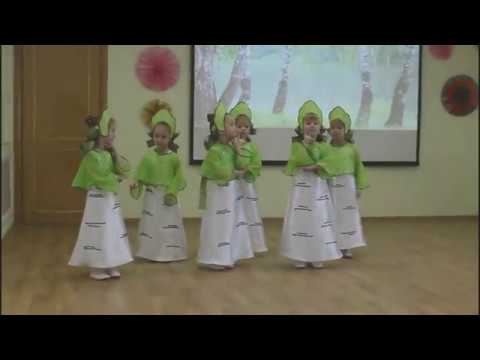 nine0003
nine0003
The compositions "Swan" and "Carousel", "Troika" and "Spinning Spinner", "At the Autumn Fair" and "Siberian Suite", "Sudarushka" and "Patterns", like many other numbers of the ensemble "Birch", opened for foreigners non-hostile Russia with a human face.
Other, Mira Koltsova, Nadezhda Nadezhdina,
How did the Berezka ensemble conquer the whole world? | Culture
And Nadezhda Sergeevna has already learned how to “turn” ballerinas into “birch trees”. Very soon, Mira Koltsova became a soloist of the famous Beryozka ensemble. nine0003
Today there are about a hundred dancers in the group. Almost until the last days of her life, for three decades, Nadezhdina led Beryozka.
And it all started like this...
Nadya could dance for hours in the school dance class. She was short, thin, plastic. When the music began to sound, her imagination drew various joyful pictures. It seemed to her that she was not in a cold study room, but somewhere in a clearing, where there were many flowers ... Nadia saw a green meadow into which she wanted to fall face down ... nine0003
She was short, thin, plastic. When the music began to sound, her imagination drew various joyful pictures. It seemed to her that she was not in a cold study room, but somewhere in a clearing, where there were many flowers ... Nadia saw a green meadow into which she wanted to fall face down ... nine0003
She was born in Vilno (Poland) in 1908, more than 100 years ago, in the family of the famous writer A. Ya. Brushtein. When her daughter said after graduation that she wanted to dance, her mother furrowed her brows. Smart, talented, success in all subjects. What dances? And she said sternly, "No." Then, less harshly, she added: “Nadya, get an education, a profession, and dancing will not go away from you.” nine0003
But Nadezhda stood her ground. She became a student of the famous teacher A. Ya. Vaganova at the ballet school in Petrograd. The girl honed her skills every day, she knew how, like no one else, to convey the “meaning” of each dance movement to the audience. By the end of the training, it became clear that Nadia had a great future. And the teachers were not mistaken in it. Already at the first examination screening, she was offered a job at the Bolshoi Theater. nine0003
She became a student of the famous teacher A. Ya. Vaganova at the ballet school in Petrograd. The girl honed her skills every day, she knew how, like no one else, to convey the “meaning” of each dance movement to the audience. By the end of the training, it became clear that Nadia had a great future. And the teachers were not mistaken in it. Already at the first examination screening, she was offered a job at the Bolshoi Theater. nine0003
She flew home on wings. “ Mommy, ,” Nadya exclaimed joyfully, “ I’m leaving for Moscow. I am a ballet dancer! » Alexandra Yakovlevna sadly asked her daughter: « So your dream has come true? "Hope lowered her head, thought for a moment, then confidently answered:" It will come true, it will definitely come true ". nine0003
9 years of hard work at the Bolshoi Theater brought results. Nadezhda took part in the ballets The Little Humpbacked Horse, Swan Lake, Don Quixote, Bayadere, Raymond… Her passion for dancing was appreciated. She danced Russian, Ukrainian, Spanish, Hungarian folk dances in the theater. The actors ran to see how famously the girl danced mischievous and funny dance motifs. nine0003
Nadezhda took part in the ballets The Little Humpbacked Horse, Swan Lake, Don Quixote, Bayadere, Raymond… Her passion for dancing was appreciated. She danced Russian, Ukrainian, Spanish, Hungarian folk dances in the theater. The actors ran to see how famously the girl danced mischievous and funny dance motifs. nine0003
In 1941, Nadezhda was asked to work in the ensemble of the Siberian Military District as an artistic director. This was a new and responsible business for her, but she coped, although she had to do more economic work, and not creative work. And 3 years later, when Nadezhda turned 35, she was offered a job in the ballet department of the Moscow stage. She, with her inherent energy and tirelessness, almost completely renewed the team, changed the repertoire. It seemed that everything in her life was going well. There is no end to the tour, the audience accepts the new team for "Hurrah!", flowers, applause, fans . .. Painting by artist V. Lebedev "Portrait of N. Nadezhdina"
.. Painting by artist V. Lebedev "Portrait of N. Nadezhdina"
Photo: ru.wikipedia.org
She has a young and talented husband, a famous artist, graphic artist V. V. Lebedev, at one time an employee of the Satyricon, one of the founders of the ROSTA Windows. Nadezhda met him in Moscow when she played at the Bolshoi Theater.
And then a long-awaited surprise. The collective of the folk choir of Kalinin (Tver) did not have a leader for staging dances. Hope was invited to work, and she agreed. For the first time, she had to work not with a ballet troupe, but with a dance group. Then Nadezhda thanked fate more than once for such a generous gift. For several years in a row, she traveled from Moscow to Kalinin and back, mentally “dancing” all the fragments of the movements. nine0003
nine0003
And again there was a great success, halls full of spectators, laudatory articles in newspapers...
But she wouldn't be her if she didn't dare to tell herself that she had long been ready to work independently, with her own team. “At 40, start everything from scratch? friends asked when they learned about Nadezhda's decision. - Why? You now have fame, success, awards. How can I get rid of all this at once? Only her husband Vladimir Vasilievich happily remarked: “You know, Nadia, I’m even happy for you. Everything is behind me, and everything is just beginning for you. nine0003
Now she spent whole days disappearing in educational institutions, dance groups, gathering her group bit by bit. And in 1948, for the first time, 16 stately girls in red sundresses with handkerchiefs and birch branches appeared on the stage of the Hermitage Garden Theater in Moscow. The round dance was accepted by the audience with joy. Everyone was captivated by the lyricism, the unhurried, as it later became known, “floating step” of Nadezhda. After this performance, the round dance became known as "Birch", and its leader took on the pseudonym Nadezhdina. nine0003
And in 1948, for the first time, 16 stately girls in red sundresses with handkerchiefs and birch branches appeared on the stage of the Hermitage Garden Theater in Moscow. The round dance was accepted by the audience with joy. Everyone was captivated by the lyricism, the unhurried, as it later became known, “floating step” of Nadezhda. After this performance, the round dance became known as "Birch", and its leader took on the pseudonym Nadezhdina. nine0003
Nadezhda Sergeevna invented the dances herself. Her Carousel, Birch, Spinner, At the Autumn Fair, Swan, Siberian Suite, Sudarushka and many others were real choreographic novels. In fact, Nadezhdina created a special dance school. It was hard to believe that it was not the stage that was spinning, but the girls dancing. A few years later, Nadezhdina invited male dancers to Beryozka. Over time, their own orchestra of folk instruments appeared ... nine0003
A few years later, Nadezhdina invited male dancers to Beryozka. Over time, their own orchestra of folk instruments appeared ... nine0003
Mira Koltsova, People's Artist of the Russian Federation, Artistic Director of the Beryozka State Choreographic Ensemble. N. Nadezhdina celebrated her creative anniversary - her 60th birthday. Of these, for almost 40 years she has been running Beryozka.
Koltsov's husband, Leonid Konstantinovich Smirnov, is the chief conductor of the ensemble's orchestra. Son Philip is a composer, pianist, author of music for cartoons and television programs, a member of the Union of Composers of the Russian Federation, holder of the Order of Service to Art. Grandson Nikolai is a student of the composition department of the Moscow Conservatory. P. I. Tchaikovsky, laureate and diplomat of international competitions.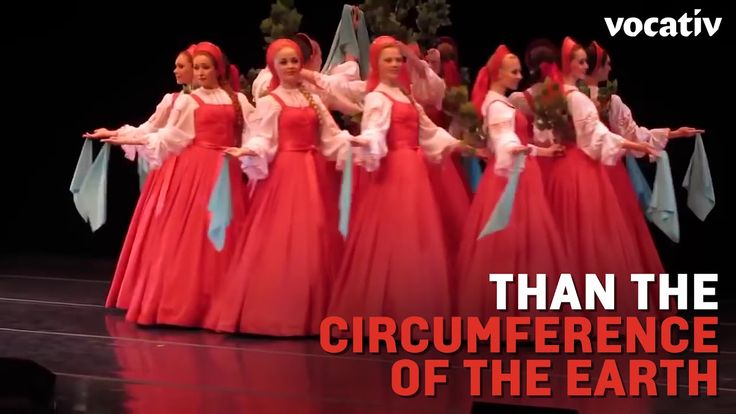 nine0003
nine0003
It is no coincidence that everyone in the ensemble calls their family a musical “box”. In her work, Mira Koltsova follows the precepts of her Teacher, Nadezhda Nadezhdina, who has always admired Russian folklore. Koltsova's productions of "Rainbow", "Razdolnaya", "Lacemakers", "Petrushka" performed by the ensemble are known in 80 countries of the world. Artists of "Beryozka" visited Italy, Greece, Argentina, Chile, North Korea, Spain and China, as well as Poland and Cyprus. nine0003
One of the Parisian newspapers published an article entitled “The Russian character of Beryozka”. Journalists wrote that it was enough to see at least one Beryozka concert in order to get to know Russia.






